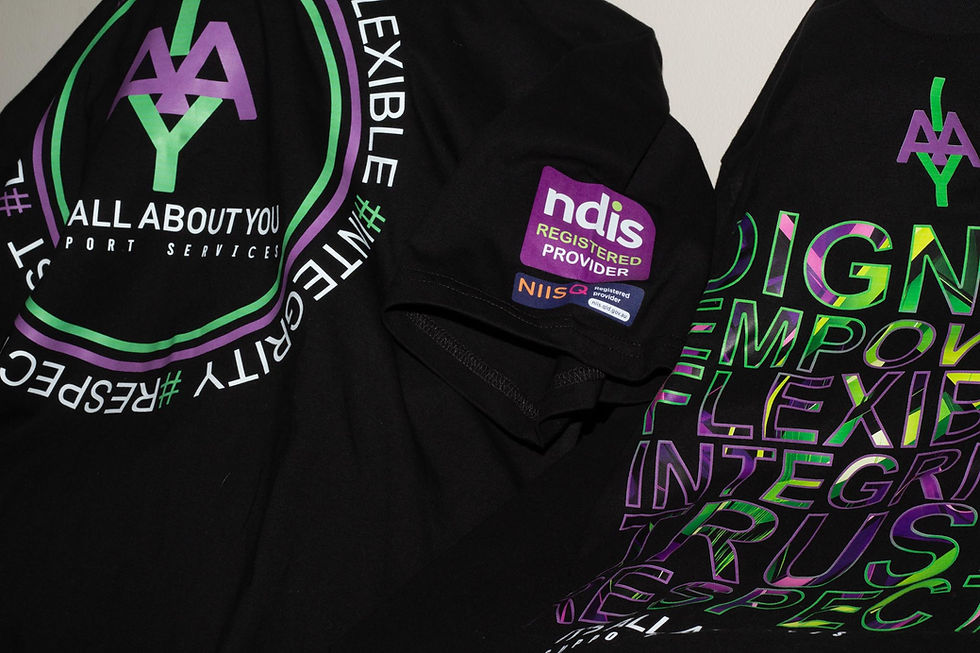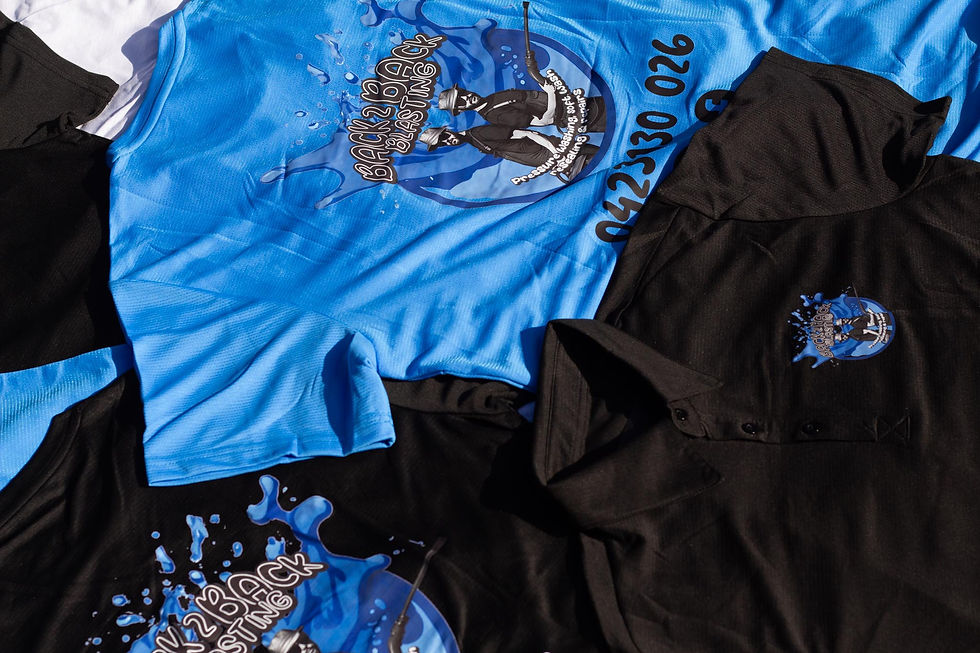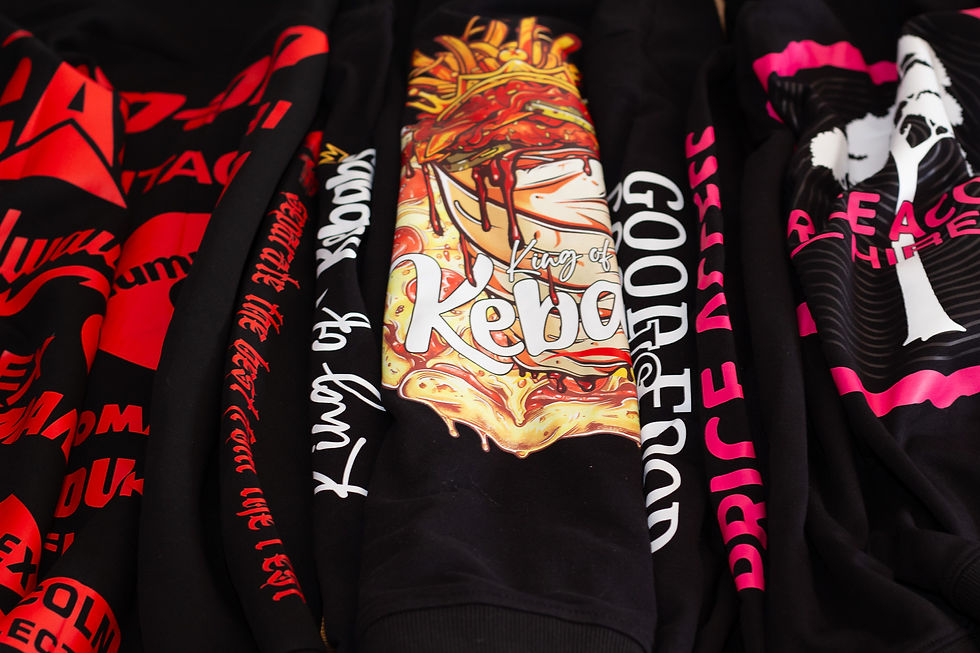Popular Techniques for Designing Custom Apparel
- Benjamin Smith

- Aug 5
- 3 min read
Designing custom apparel is an exciting way to express creativity, promote brands, or create unique fashion statements. Whether you are a business owner, an event organiser, or simply someone who loves personalised clothing, understanding the popular techniques for custom apparel design can help you achieve the best results. This guide explores various methods, their benefits, and practical tips to help you make informed decisions.
Understanding Custom Apparel Design Techniques
Custom apparel design involves applying graphics, text, or patterns onto clothing items such as t-shirts, hoodies, hats, and more. The choice of technique depends on factors like budget, fabric type, design complexity, and intended use. Here are some of the most popular methods:
Screen Printing
Screen printing is one of the oldest and most widely used techniques for custom apparel. It involves creating a stencil (or screen) and using it to apply layers of ink on the fabric. Each colour requires a separate screen, making it ideal for designs with limited colours.
Advantages:
Durable and vibrant prints
Cost-effective for large orders
Works well on various fabric types
Tips for Screen Printing:
Keep designs simple with fewer colours to reduce costs.
Use high-quality inks for better longevity.
Choose fabrics with a smooth surface for crisp prints.
Direct-to-Garment (DTG) Printing
DTG printing uses specialised inkjet technology to print designs directly onto the fabric. This method is perfect for complex, multi-colour designs and small batch orders.
Advantages:
High detail and colour accuracy
No minimum order quantity
Soft feel on fabric
Tips for DTG Printing:
Use 100% cotton garments for best results.
Avoid printing on dark fabrics without a white underbase.
Ensure designs have high resolution for sharp prints.

Heat Transfer Printing
Heat transfer involves printing a design onto a special transfer paper and then using heat and pressure to transfer the image onto the fabric. This method is versatile and suitable for small runs or personalised items.
Advantages:
Good for full-colour and photographic designs
Easy to customise individual pieces
Works on various materials including polyester
Tips for Heat Transfer:
Use high-quality transfer paper for vibrant colours.
Preheat garments to remove moisture before applying transfers.
Follow manufacturer instructions for temperature and pressure.
Exploring Custom Apparel Materials and Their Impact on Design
The choice of fabric plays a crucial role in the final look and feel of custom apparel. Different materials interact differently with printing techniques, affecting durability and comfort.
Cotton
Cotton is the most popular fabric for custom apparel due to its softness and breathability. It works well with screen printing and DTG methods.
Polyester
Polyester is durable and moisture-wicking, making it ideal for sportswear. Heat transfer and sublimation printing are best suited for polyester fabrics.
Blends
Blended fabrics combine the benefits of cotton and synthetic fibres. They offer versatility but may require testing to ensure print quality.

Tips for Creating Effective Custom Apparel Designs
Creating a design that stands out requires more than just creativity. Here are some practical recommendations to enhance your custom apparel projects:
Keep it simple: Bold, clear designs are easier to print and more visually appealing.
Consider placement: Think about where the design will be on the garment - front, back, sleeves, or all over.
Use vector graphics: Vector files ensure scalability without loss of quality.
Choose colours wisely: Contrast between design and fabric colour improves visibility.
Test samples: Always order a sample to check print quality and garment fit before bulk production.
How to Choose the Right Custom Apparel Printing Service
Selecting a reliable printing service is essential for achieving professional results. Here are factors to consider:
Experience and reputation: Look for companies with positive reviews and a strong portfolio.
Printing options: Ensure they offer the technique that suits your design and fabric.
Turnaround time: Confirm production and delivery timelines.
Customer support: Responsive communication helps resolve issues quickly.
Pricing: Compare quotes but avoid compromising quality for cost.
For those interested in exploring more about custom clothing printing, visiting specialised blogs and service providers can provide valuable insights and inspiration.

Maximising the Impact of Your Custom Apparel
Once your custom apparel is designed and printed, consider how to maximise its impact:
Brand consistency: Use your brand colours and logos to reinforce identity.
Event giveaways: Custom apparel makes memorable promotional items.
Employee uniforms: Enhance team spirit and professionalism.
Online sales: Unique designs can attract niche markets.
Social media sharing: Encourage customers to share photos wearing your apparel.
By combining the right design techniques with strategic use, custom apparel can become a powerful tool for personal expression or business growth.
Designing custom apparel is a rewarding process that blends creativity with technical know-how. By understanding popular techniques, fabric choices, and design principles, you can create clothing that looks great and lasts long. Whether for personal use or commercial purposes, investing time in planning and selecting the right methods will ensure your custom apparel stands out.

Comments